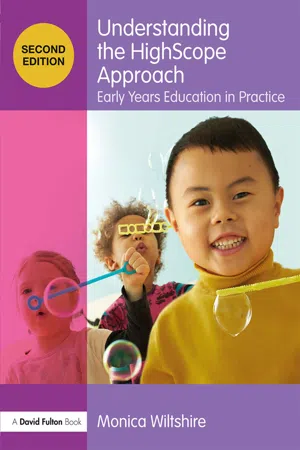
- 166 pages
- English
- ePUB (mobile friendly)
- Available on iOS & Android
About This Book
Understanding the HighScope Approach is a much-needed source of information for those wishing to extend and consolidate their understanding of this innovative education programme. It will enable the reader to analyse the essential elements of the HighScope approach to early childhood and its relationship to high-quality early years practice.This second edition contains all the original content, which covers all areas of the curriculum including learning environment, plan-do-review, adult-child interaction and assessment, but has been updated to be fully in line with the latest changes to research, policy and practice. New topics and features include:
? outdoor play and learning
? using the HighScope approach with children with special needs and who speak English as an additional language
? managing the approach with bigger class sizes
??the implementation of technology with children in HighScope settings
? a selection of new photographs
Written to support the work of all those in the field of early years education and childcare, this is a vital text for students, early years and childcare practitioners, teachers, early years professionals, children's centre professionals, lecturers, advisory teachers, head teachers and setting managers.
Frequently asked questions
Information
1 History and research
How HighScope got its name
Origins and research
David Weikart
Perry Preschool Project
Background to the project
Theoretical influences
Table of contents
- Cover
- Half Title
- Title Page
- Copyright Page
- Dedication
- Table of Contents
- List of illustrations
- Introduction
- 1 History and research
- 2 An overview of HighScope
- 3 Active learning
- 4 The learning environment
- 5 The daily routine
- 6 Adult—child interaction
- 7 Assessment and teamwork
- 8 The future
- Index